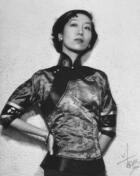
Eileen Chang was born into an upper-class family in Shanghai. Her mother was a modern woman educated in England; her father, an opium addict with traditional ideas. The marriage ended in divorce and Eileen would remain in the custody of her father, until the abuse he subjected her to forced her to go live with her mother. After the Japanese invasion of Hong Kong in 1941, at whose university she studied literature, she returned to the also occupied Shanghai, where she began to publish in magazines the stories and novels that made her a famous writer. In 1944 she married Hu Lancheng, a politician who collaborated with the Japanese and whom she would divorce three years later. The rise of the communists to power would take her to the US in 1955, where she would die forty years later without ever having returned to China. During her years in the US, Chang taught at various universities and continued writing essays, narratives and scripts for films shot in Hong Kong. Although her popularity remained alive in Taiwan and Hong Kong, during the communist regime her books were relegated in mainland China for political reasons. In the nineties, coinciding with the opening of the regime and the rise of a thriving middle class, her work was rediscovered with great success.
In addition to the two short novels that make up Incienso (1943; Libros del Asteroid, 2019), his books include the short novels The Golden Cage (1943, seed of a later novel that he would publish in English in 1967: The Rouge of the North). , The Red Rose and the White Rose (1945), A Love That Destroys Cities (1947) and Desire, Danger (1975, made into a film by Ang Lee in 2007).




